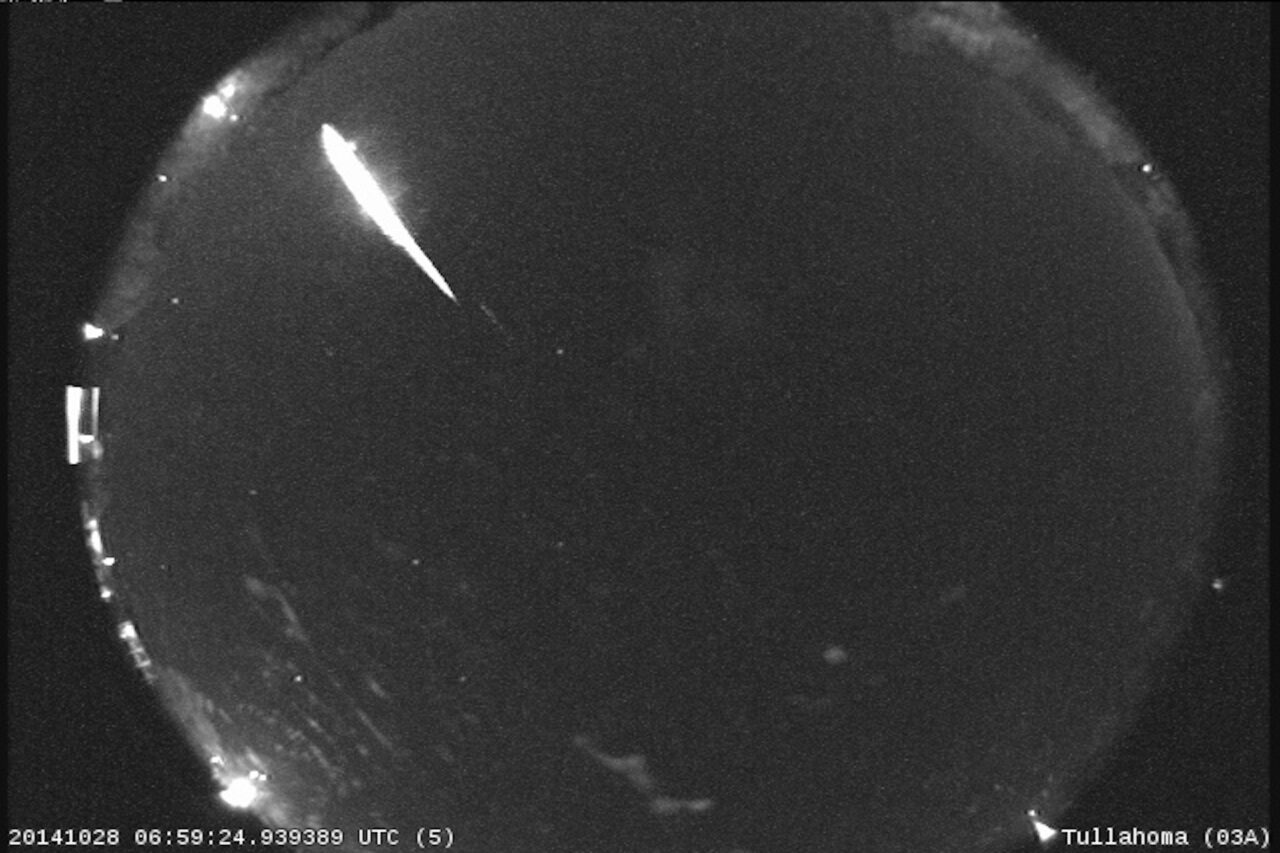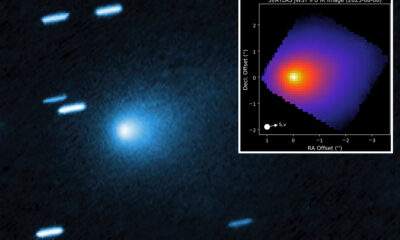Science
Earth Faces Potential Meteor Threat from Taurids in 2032, 2036

New research highlights a possible danger to Earth in the coming years from the Taurid meteor shower, which peaks annually from late October to early November. According to a study published in Acta Astronautica, scientists warn that denser clusters of debris from Comet Encke could lead to increased risks of larger meteors impacting our planet in 2032 and 2036.
Understanding the Taurid Meteor Shower
Each fall, Earth traverses a stream of debris released by Comet Encke, resulting in spectacular fireballs lighting up the night sky. While these meteors typically provide a stunning visual display, researchers are concerned about the potential hazards posed by larger fragments of the comet. Every three to seven years, the Taurid meteor shower intensifies, often producing more vibrant fireballs visible from Earth. This phenomenon occurs as Earth passes through denser, pebble-sized chunks of comet debris.
Mark Boslough, a researcher at the University of New Mexico and lead author of the study, emphasizes the importance of understanding the risks associated with these celestial events. The research team utilized observational data and planetary defense modeling to assess the likelihood of Near-Earth Objects (NEOs) causing significant damage. Their findings indicate that the probability of air-burst sized NEOs—objects that explode in the atmosphere rather than striking the ground—is higher than previously thought.
Potential Hazards from Resonant Swarms
The study also explores the concept of a Taurid resonant swarm, which could be influenced by the gravity of Jupiter. The Taurid stream orbits the Sun seven times for every two orbits of Jupiter, creating conditions where debris can cluster together due to the planet’s immense gravitational pull. According to Boslough, while the resonant swarm remains theoretical, evidence suggests that small objects might exist within this framework, as bright fireballs and seismic impacts on the Moon have coincided with predicted occurrences.
“If the hypothetical Taurid resonant swarm does occur, it will make a close flyby of Earth in 2032 and 2036,” Boslough stated. “During those years, Earth could experience a higher impact risk from the Taurid meteor shower.”
Fortunately, scientists have time to prepare. Boslough advocates for targeted sky surveys using existing telescopes during the close approaches in 2032 and 2036. Early detection of these dense clusters could provide crucial time to devise strategies to mitigate any potential impact risks.
Boslough reassures that while the average probability of a significant impact remains low, the heightened risks associated with the resonant swarm warrant attention. He noted, “The swarm will come from the direction of the Sun in 2036, so fireballs will not be seen in our blue skies unless they are extremely bright.”
This research serves as a reminder of the dynamic interactions between celestial bodies and the ongoing need for planetary defense strategies. As Earth continues to navigate through the debris fields of Comet Encke, preparations for potential meteor threats are crucial in safeguarding our planet’s future.
-

 Business2 weeks ago
Business2 weeks agoIconic Sand Dollar Social Club Listed for $3 Million in Folly Beach
-

 Politics2 weeks ago
Politics2 weeks agoAfghan Refugee Detained by ICE After Asylum Hearing in New York
-

 Health2 weeks ago
Health2 weeks agoPeptilogics Secures $78 Million to Combat Prosthetic Joint Infections
-

 Science2 weeks ago
Science2 weeks agoResearchers Achieve Fastest Genome Sequencing in Under Four Hours
-

 Health2 weeks ago
Health2 weeks agoResearcher Uncovers Zika Virus Pathway to Placenta Using Nanotubes
-

 Science2 weeks ago
Science2 weeks agoInterstellar Object 3I/ATLAS Emits Unique Metal Alloy, Says Scientist
-

 Lifestyle2 weeks ago
Lifestyle2 weeks agoJump for Good: San Clemente Pier Fundraiser Allows Legal Leaps
-

 World2 weeks ago
World2 weeks agoUS Passport Ranks Drop Out of Top 10 for First Time Ever
-

 Business2 weeks ago
Business2 weeks agoSan Jose High-Rise Faces Foreclosure Over $182.5 Million Loan
-

 Entertainment2 weeks ago
Entertainment2 weeks agoJennifer Lopez Addresses A-Rod Split in Candid Interview
-

 Top Stories2 weeks ago
Top Stories2 weeks agoChicago Symphony Orchestra Dazzles with Berlioz Under Mäkelä
-

 World2 weeks ago
World2 weeks agoRegional Pilots’ Salaries Surge to Six Figures in 2025









